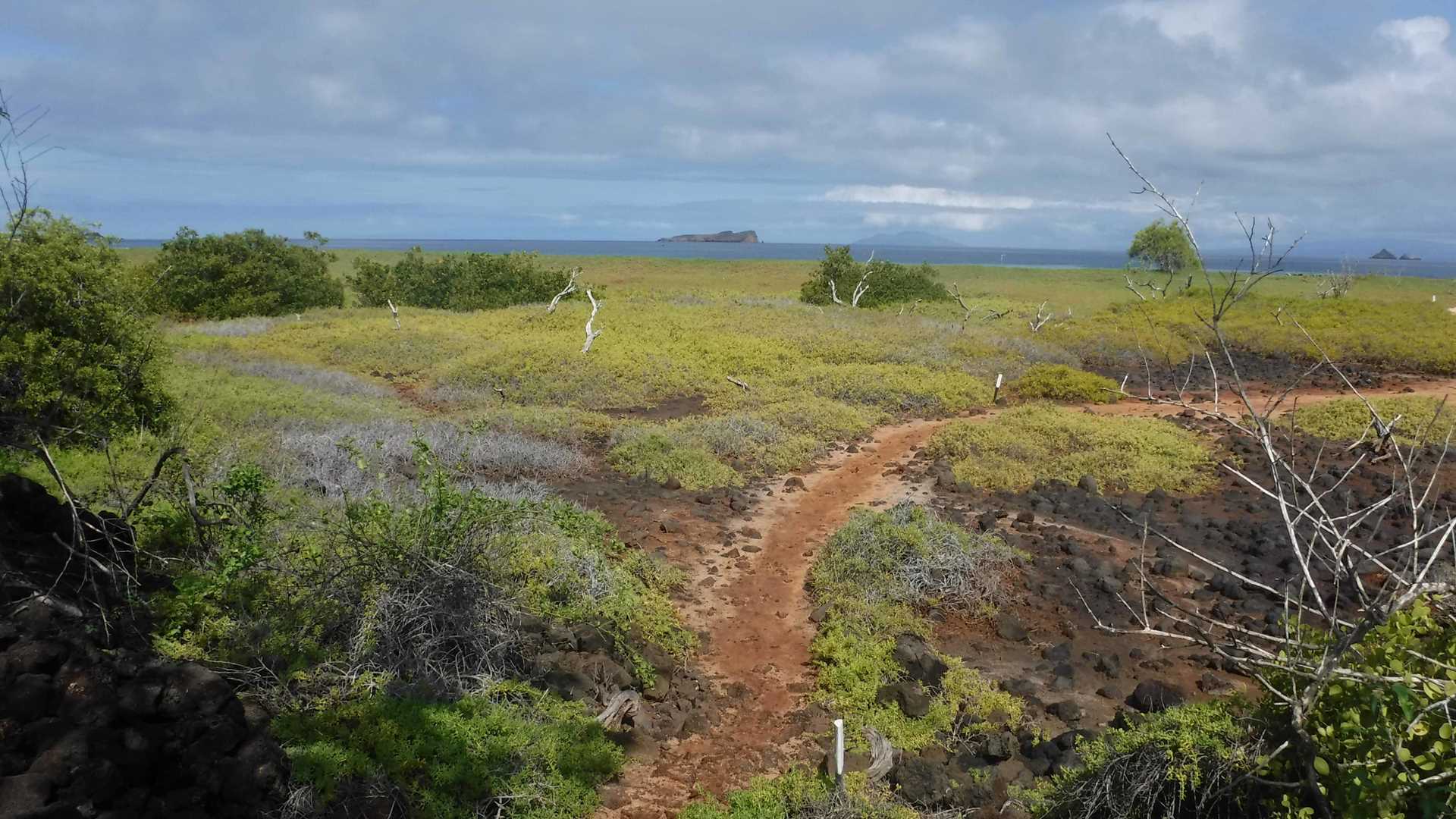Guests onboard the National Geographic Endeavour II spent the morning exploring the northern region of Santa Cruz. Heavy rainfall over the past few months has resulted in heavy vegetation and a saline lagoon area at the start of the trail toward Cerro Dragon. Guests were greeted by marine iguanas at the start of the trail, and a lush carpet of sesuvium.
Passengers learned about the adaptations of the sesuvium succulent at the start of trail, and continued learning about the interesting flora of Galapagos throughout the excursion. Guests were intrigued by the way in which plants in Galapagos could survive the harsh environmental conditions of the archipelago, including, high salinity, high UV radiation, and little freshwater.
Cerro Dragon is the perfect site for understanding the differences between the terrestrial and marine iguana. Passengers first encountered the marine iguana at the start of the trail and could easily compare this species with the terrestrial species. Guests also learned about the divergence between marine and terrestrial iguanas.
Passengers encountered between 15 and 0 terrestrial iguanas throughout their hike along dragon hill. Guests returned about the feeding and behavioral ecology of this species, as well as their interesting conservation story, involving the semi-captive breeding efforts of Venetia Island. Guests hiked through difficult terrain at the start of the trail, and had to remove muddy sediments from their Shoes before e embarking the Zodiacs the return home.
Guests spent the afternoon snorkeling along Guy Fawkes Islet. The eater visibility was excellent. Guests enjoyed a variety of tropical fishes, sea turtles, macro echinoderms, and sea lions. Young explores spent the afternoon learning how to drive the Zodiacs.






